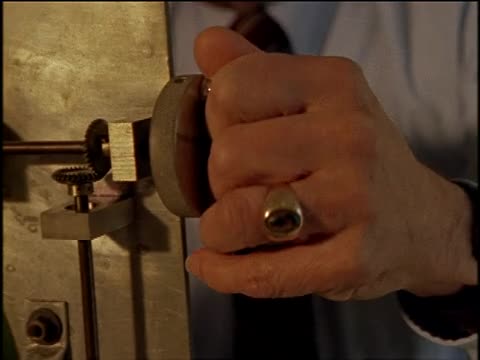NOVA; To the Moon; Interview with John Cornelius Houbolt, aerospace engineer behind the Lunar Orbit Rendezvous (LOR), part 3 of 4
- Series
- NOVA
- Episode
- To the Moon
- Producing Organization
- WGBH Educational Foundation
- Contributing Organization
- WGBH (Boston, Massachusetts)
- AAPB ID
- cpb-aacip-15-rn3028qt77
If you have more information about this item than what is given here, or if you have concerns about this record, we want to know! Contact us, indicating the AAPB ID (cpb-aacip-15-rn3028qt77).
- Description
- Program Description
- This remarkably crafted program covers the full range of participants in the Apollo project, from the scientists and engineers who promoted bold ideas about the nature of the Moon and how to get there, to the young geologists who chose the landing sites and helped train the crews, to the astronauts who actually went - not once or twice, but six times, each to a more demanding and interesting location on the Moon's surface. "To The Moon" includes unprecedented footage, rare interviews, and presents a magnificent overview of the history of man and the Moon. To the Moon aired as NOVA episode 2610 in 1999.
- Raw Footage Description
- John Cornelius Houbolt, aerospace engineer behind the Lunar Orbit Rendezvous (LOR) is interviewed about LOR. Houbolt shows his papers and research on LOR, and talks about the objections and resistance that he faced from his colleagues at NASA. To explain LOR, Houbolt uses a model including a globe and winch, but says that he was not the sole creator of LOR, and shows a chart comparing the sizes of potential vehicles for lunar orbit. Houbolt also shows a chart that demonstrated the flexibility and cost-effectiveness of the LOR and Lunar Module (LM), and talks about his feelings when he was told that NASA had adopted LOR.
- Created Date
- 1998
- Asset type
- Raw Footage
- Genres
- Interview
- Topics
- History
- Technology
- Science
- Subjects
- American History; Gemini; apollo; moon; Space; astronaut
- Media type
- Moving Image
- Duration
- 00:23:17
- Credits
-
-
Interviewee: Houbolt, John Cornelius, 1919-2014
Producing Organization: WGBH Educational Foundation
- AAPB Contributor Holdings
-
WGBH
Identifier: cpb-aacip-6dc4b3d9d04 (Filename)
Format: Digital Betacam
Generation: Original
Duration: 0:23:18
If you have a copy of this asset and would like us to add it to our catalog, please contact us.
- Citations
- Chicago: “NOVA; To the Moon; Interview with John Cornelius Houbolt, aerospace engineer behind the Lunar Orbit Rendezvous (LOR), part 3 of 4 ,” 1998, WGBH, American Archive of Public Broadcasting (GBH and the Library of Congress), Boston, MA and Washington, DC, accessed December 5, 2025, http://americanarchive.org/catalog/cpb-aacip-15-rn3028qt77.
- MLA: “NOVA; To the Moon; Interview with John Cornelius Houbolt, aerospace engineer behind the Lunar Orbit Rendezvous (LOR), part 3 of 4 .” 1998. WGBH, American Archive of Public Broadcasting (GBH and the Library of Congress), Boston, MA and Washington, DC. Web. December 5, 2025. <http://americanarchive.org/catalog/cpb-aacip-15-rn3028qt77>.
- APA: NOVA; To the Moon; Interview with John Cornelius Houbolt, aerospace engineer behind the Lunar Orbit Rendezvous (LOR), part 3 of 4 . Boston, MA: WGBH, American Archive of Public Broadcasting (GBH and the Library of Congress), Boston, MA and Washington, DC. Retrieved from http://americanarchive.org/catalog/cpb-aacip-15-rn3028qt77
